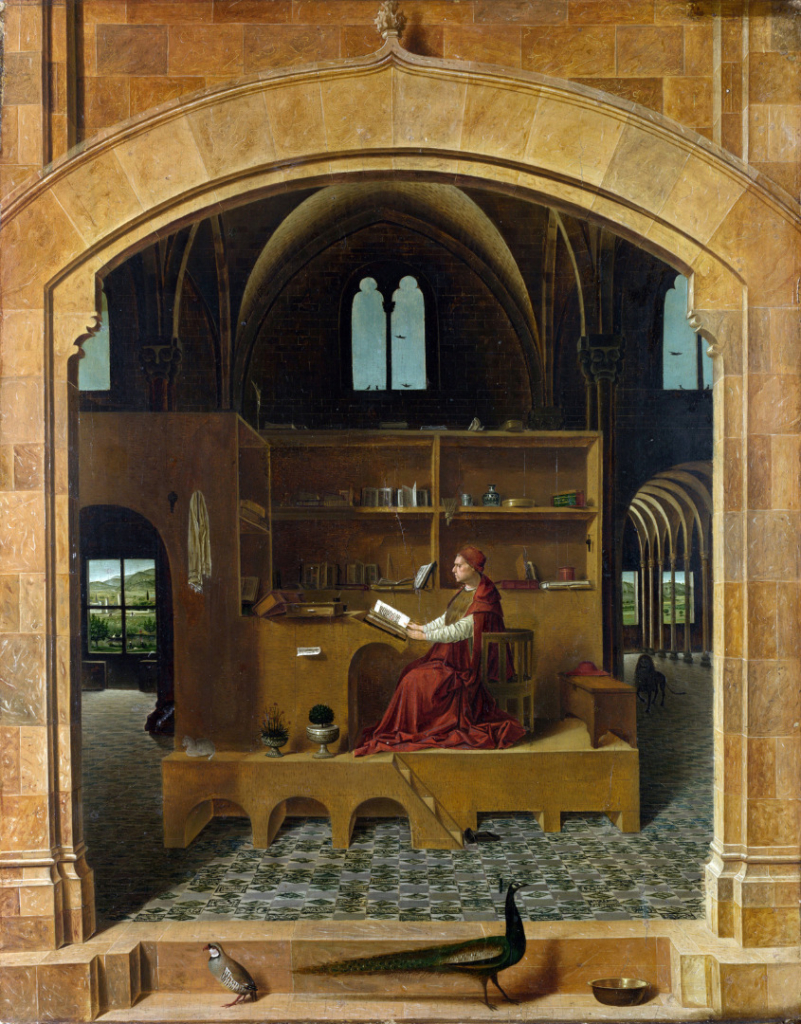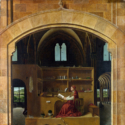Editorial
Issue 15
Keywords
Editorial, pandemic, research, research and public history
Research in pandemic times
https://dx.doi.org/10.15180/211507/001The enduring image of the scholar has been of the individual alone with their books in a solitary cell. One thinks, perhaps, of Italian Renaissance painter Antonello da Messina’s ‘St Jerome in His Study’.

It would follow that a pandemic year, closing museums, libraries and archives, and sending researchers to their solitary workstations would be most conducive to the productivity of researchers and those that work with them, such as the members of the Science Museum Group Research Department. The reality that we all experienced was not so gentle. Museum staff were furloughed and projects postponed; academic authors and reviewers wrestled with dislocation from their colleagues, workspaces and libraries, and faced the need to create instant online courses for students, and all were burdened by worries about vulnerable friends and family, and a frightening world situation. Yet, in many ways the pandemic year has been a highly productive one, despite the circumstances.
This issue of the Journal is evidence of that productivity and stands as a testament to the resilience of all involved: this Spring issue catches us up to our normal cycle of publication after the slightly delayed appearance of Issue 14. It includes a collection of three papers associated with the Science Museum’s new permanent Science City gallery, six other research articles and an obituary of former director, Dame Margaret Weston. We can be satisfied that despite us all working from home over more than a year, the interest, diversity and volume of the Journal’s content is not dulled an iota.
Behind the scenes too, the Department has been going about its business: we have inducted one cohort of collaborative doctoral students under our AHRC-funded Collaborative Doctoral Partnership, and selected the next group of studentships, just now being advertised. We taught our ‘Curating Science and Technology’ MSc option for UCL Science and Technology Studies, although entirely online and without access to the objects and galleries that are the normal focus of our teaching. And we have composed several research funding bids, working with a wide variety of partners. Some projects, envisaged and commenced as involving major in-person activities, have moved – and even been completed – online. Others have been awarded in this last year, with their investigators starting entirely online but very much looking forward to the museums opening and being able to meet again. We hope and expect that future issues of the Journal will feature outcomes from these projects.
It is the social side of research that has been missing. We have learned to conduct our seminars, workshops and conferences online – indeed, we hosted two major online conferences (with the Scientific Instrument Commission in September, and the Sound Instruments and Sonic Cultures conference, hosted by the Science and Media Museum, in December). Surely, some of this online practice will remain when we return to the workplace, not least for the greater inclusivity of conferences that do not entail expensive travel. But research, ineluctably, has a social aspect.
Conferences are more than the performance and witnessing of research reports; they are the opportunity for extended discussion and the development of new ideas. Publishing involves the spontaneous social discussion of a submitted paper, the gathering-round a layout or the sharing of an editorial board meeting. Teaching in the museum benefits from the kinaesthetic appreciation of museum spaces, the presence of historic objects and the direct interaction of the seminar room. Grant-composition generally involves coffee-fuelled meetings where joint ideas are conceived between people bringing differing skills and interests; diagrams are often drawn. We have learned much from working in isolation, but living research needs social contact. We look forward to our return.


